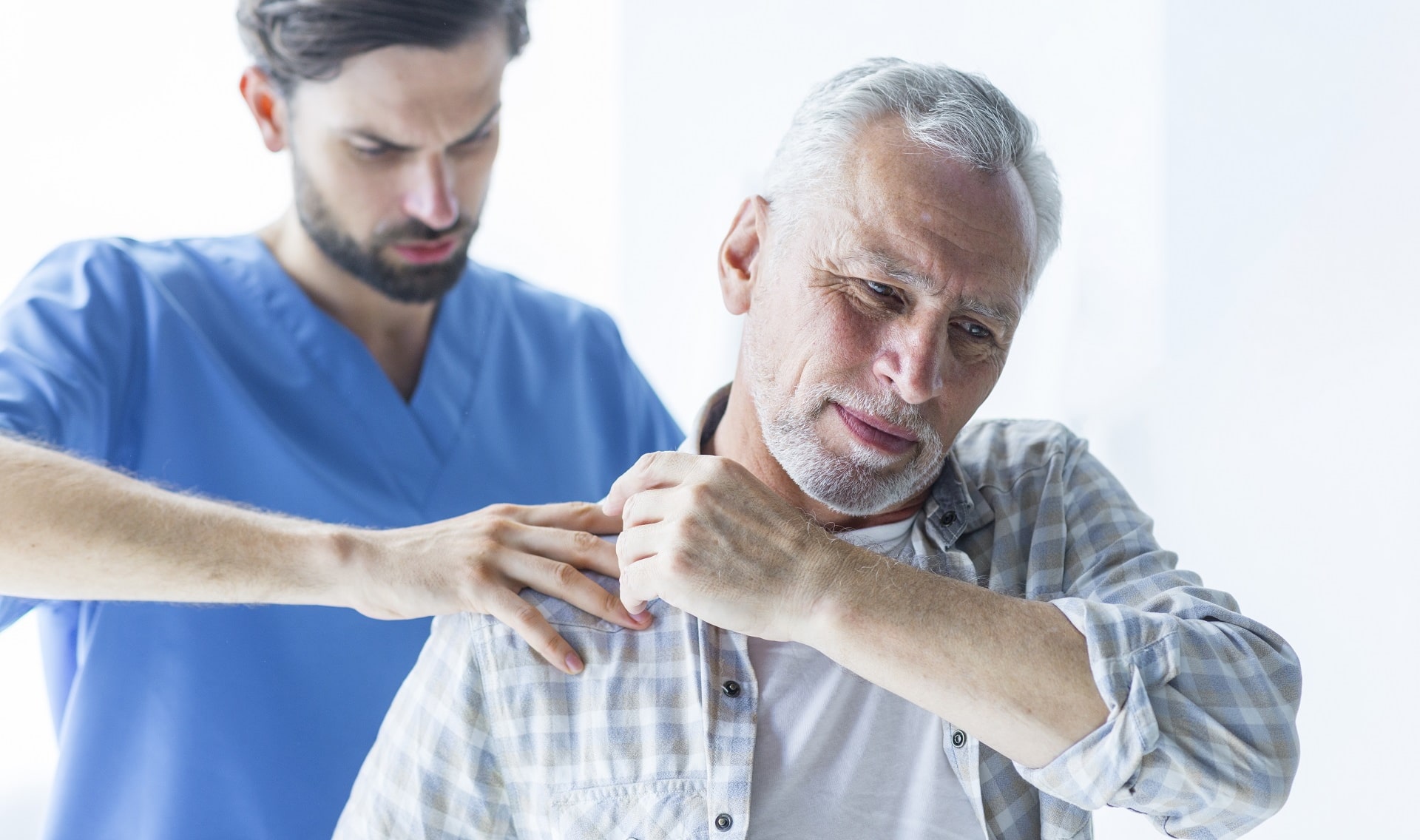Shoulder Dislocation Treatment in Bangalore | Praxis Ortho Care
Why do shoulders dislocate?
The shoulder joint is a ball in socket joint and is the most mobile joint in the human body. The socket, however, is quite shallow and there are no bony constraints which means that the ball can come out of the socket – this is called a dislocation. The ligaments around the shoulder are important stabilizers. The labrum is a ring-like structure around the edge of the socket that’s also very important for stability. It acts a little bit like a wedge under an airplane tire to keep the tire, or in this case, the ball of the shoulder, from moving too far. Muscles around the shoulder, particularly the rotator cuff muscles and muscles around the shoulder blade (rhomboids, trapezius, latissimus) are also important for providing dynamic stability to the shoulder.
If a sufficient force is applied to the shoulder, the static stabilizers of the shoulder (bone, ligaments, labrum) can tear and the shoulder dislocates. Sometimes, this doesn’t require much force, especially if you are loose-jointed, to begin with.
What can be done to prevent this?
There is no definite way of preventing a shoulder dislocation. Make sure you do not get hurt and maybe avoiding contact & collision sports, like rugby. Otherwise, maintaining really good strength of your dynamic stabilizing muscles may help reduce the likelihood of dislocation. The keys here are the rotator cuff muscles and the muscles around the shoulder blade. The showoff muscles like the biceps, triceps, and deltoid are less important for shoulder stability.
What do I do if I dislocate a shoulder?
The first step is getting it back in place. Sometimes this occurs spontaneously and if it does, you will feel better almost immediately. If this doesn’t happen, the best thing to do is to immobilize your arm and get to a hospital as quickly as possible. Nerve damage can occur when the shoulder is dislocated for a long time. Often, in the emergency department, X-rays will be taken first to confirm the injury. Then the shoulder is put back in place using gentle traction maneuvers, along with sedation and pain medicine.
What happens when the shoulder dislocates?
Typically, the labrum and ligaments are torn after a shoulder dislocation from an injury. Sometimes, fractures of the ball or socket can occur. In older people, it is more common for the rotator cuff to tear after a dislocation. In younger patients, this is not likely. If a rotator cuff tear is suspected, an MRI may be ordered. If a tear is found, surgery is often recommended, as the rotator cuff will not heal on its own and the tear may lead to ongoing pain and weakness.
Where should I go after the reduction?
Follow up with an orthopedic surgeon, preferably a shoulder specialist. Shoulder Dislocation Treatment in Bangalore – Dr. Sushal Shanthakumar says, It’s probably best to be seen within a week of injury to get a plan together and see if any other testing, like an MRI, is going to be helpful.
How are dislocations treated?
Treatment depends on many factors. Age, sex, level of activity and type of sport are all important considerations, as well as whether this was a first-time dislocation, if it happened before, and if there’s a fracture or rotator cuff tear that needs to be addressed. People at the highest risk for recurrent dislocations are young males who play contact or overhead sports. So an 18-year-old high school kabbadi player may be treated very differently than a 50-year-old who fell in the bathroom.
Will I need surgery?
Probably not, but that depends on the factors I just listed. Many people who dislocate their shoulders the first time will not have ongoing issues. As you get older, the likelihood of the shoulder dislocating again goes down. Why? For one, your tissues stiffen as you age. Older people are also less likely to participate in collision sports.
How do you treat a dislocation?
If you do dislocate, your doctor will most likely prescribe a period of immobilization, ice, and anti-inflammatory medication. When the shoulder starts to feel okay, you can get it moving again and then work on strengthening those dynamic stabilizers (rotator cuff and shoulder blade muscles) to decrease the chances of another dislocation. The recovery process may take weeks.
Why do people need surgery?
Sometimes there are associated injuries (fractures, rotator cuff tears) that need to be addressed. The most common reason is that the shoulder keeps dislocating again and again, often with less and less force involved. If we think someone is a very high risk for this happening, like our 18-year-old kabbadi player, we may recommend surgery after just one dislocation.
What is the surgical treatment?
Shoulder Dislocation Treatment in Bangalore – The most common surgery is called a “Bankart repair.” Bankart was a surgeon who described the labral tear, often seen with a shoulder dislocation. This was in the 1930s. A Bankart repair involves reattaching the torn labrum back to the socket with anchors. This can be done in an open fashion or through minimally invasive arthroscopic techniques. The newer technique currently is the minimally invasuve arthroscopy surgery. When somebody has had multiple dislocations, there is often a bone loss that occurs on the ball and/or socket. If this is the case, a Bankart repair is less successful and other procedures that address the bone loss may be a better option.
Are there any long-term issues?
One concern is that the shoulder is going to dislocate again. The likelihood of that depends on evaluating the risk factors I talked about earlier. The other long-term concern is arthritis which has been associated with repeated dislocations.
Contact us at Praxis Ortho Care -Shoulder Specialists to book an appointment! Call +91-96864 18750


